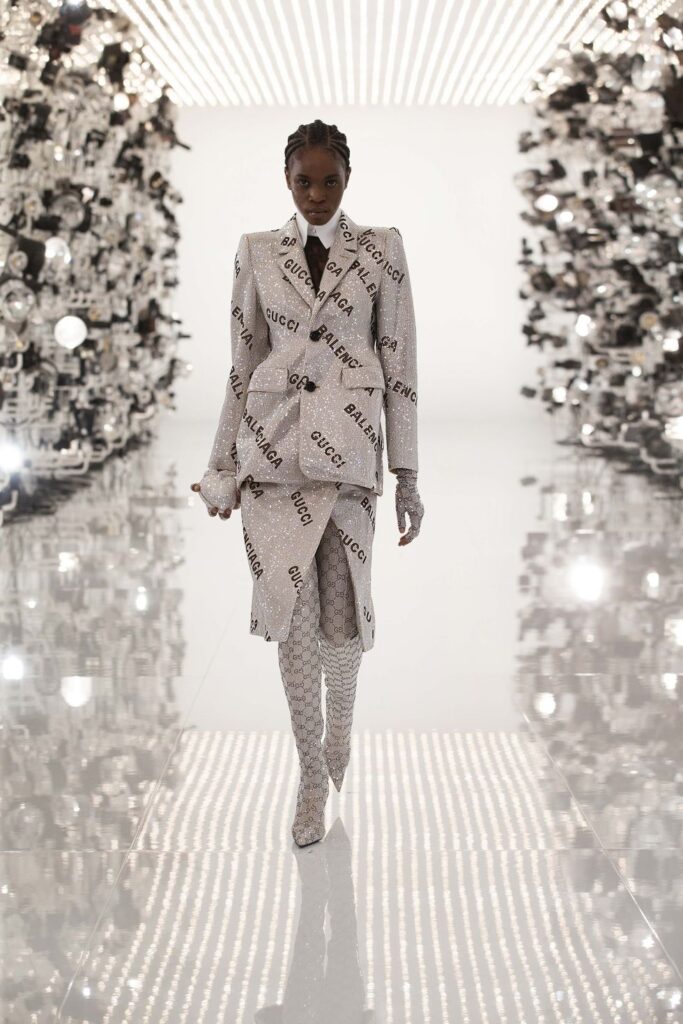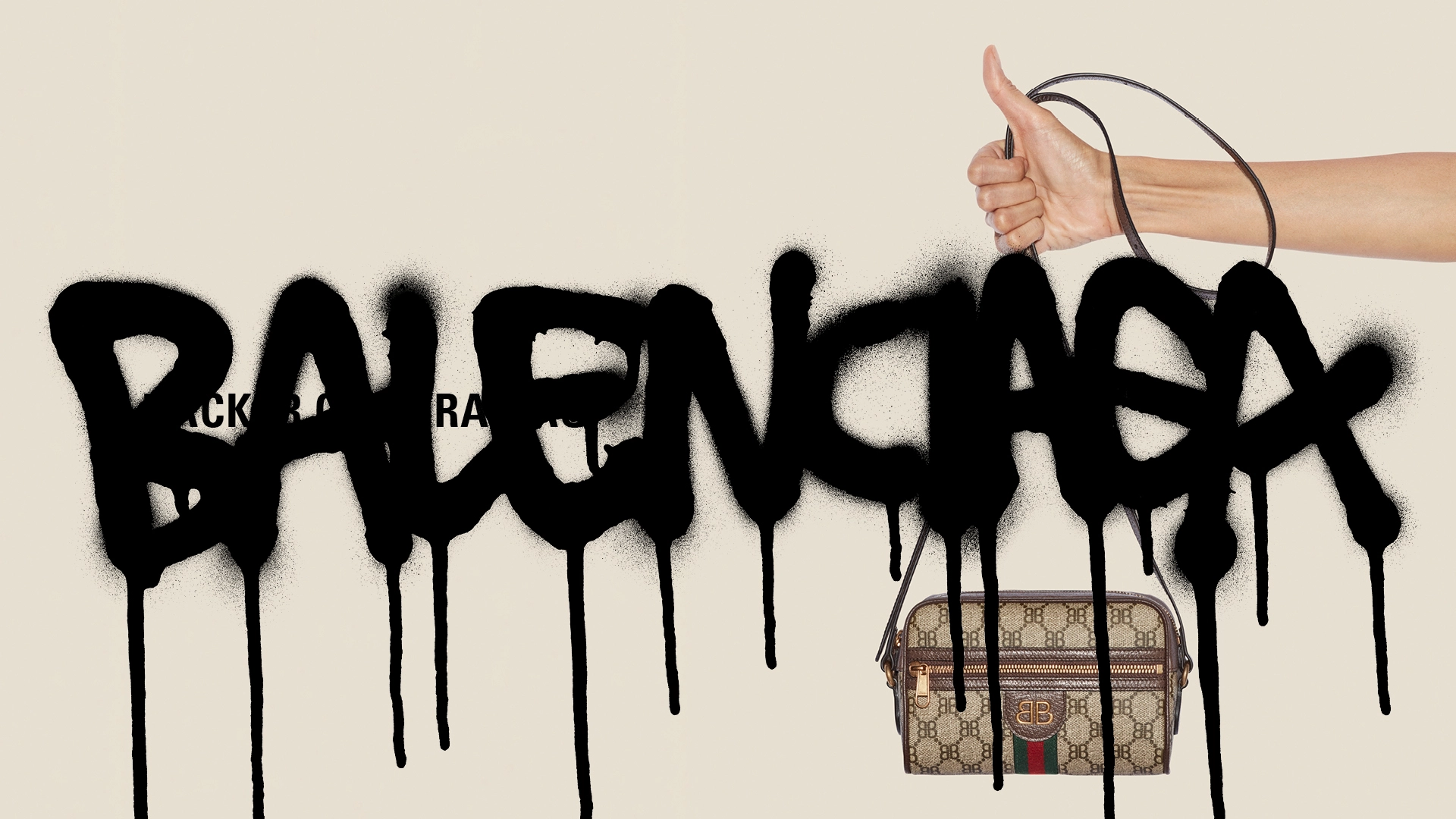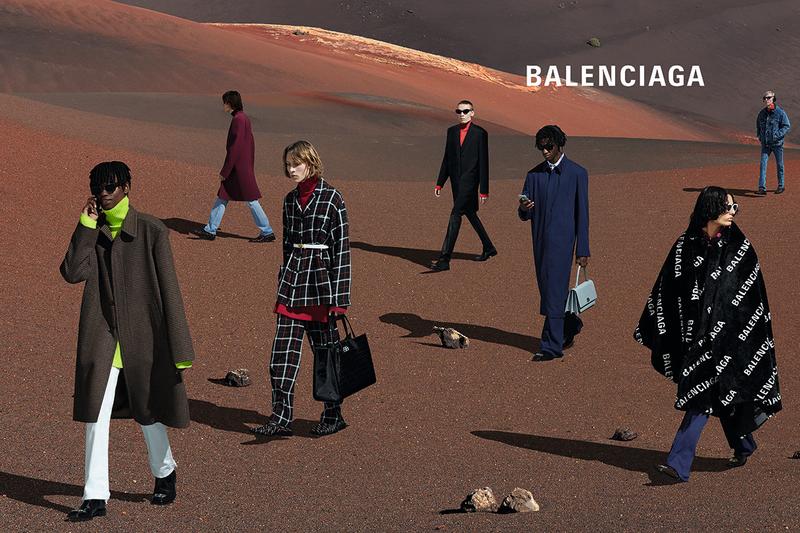By Katerina Dimarogkona,
Balenciaga passed Gucci in popularity this year, becoming the most popular luxury brand in the world, based on the Lyst index for 2021, and it is rapidly growing. It passed all the legacy houses we have known for years. Balenciaga’s aesthetic is avant-garde, structural, ironic, and anti-fashion. Gucci on the other hand, while trying to become more forward-looking, still stands for a more classic, maximalist aesthetic, with its baroque prints and flowers. But the thing is that Balenciaga becoming “the trendiest brand” is an anomaly in fashion. It represents a high-art, postmodern aesthetic that most people found unpalatable until recently. We, average people, have spent years laughing at insane hats and impractical designs on the runway, describing them as “interesting but none would actually wear that out on the street”.
And that is the big change. People are actually lining up to buy these clothes and wear them on the street. Mass audiences would not have resonated with that Cardi B line a few years ago. But times are changing, culture is shifting. We might not have a name for a lot of what we call “trendy” apparel, but it smells of postmodernism, in design, and in philosophy. Postmodernism was a movement for the few in the elite who enjoyed high art. Now it has spread and it is the aesthetic of the masses escaping the narrow world of high fashion, but that spread has happened unconsciously. We are wearing clothes influenced by it, whether we know what the word “postmodernism” means or not.
Aesthetically, postmodernism is a reaction to modernism. While modernism is about harmony, symmetry, sincerity, and focus, postmodernism is described by chaos, deliberate mess, irony, and a constant redefinition of narrative. Postmodernism does not believe in grand ideals or universal standards of beauty, and its goal is to challenge today’s big cultural values in western society and turn them upside down. It uses various techniques that seem unexpected compared to what we usually see in clothes, replacing the rule books of aesthetics with boundless freedom for individual expression.

Balenciaga shows such irony with its collaboration with the famously hated brand Crocs, turning an ugly shoe into 2,000 dollars worth of high-fashion. It is both a joke on society, on the consumer who wears the shoe, and on the brand that makes it. Another such design is its line that features Bernie Sanders, as a joke and as political commentary. This trend has been collectively called, anti-fashion, taking traditionally low-value garments and turning them into the latest fashionable creation. It is something between a sincere effort at creating something beautiful and a meme.
Other classic postmodern techniques are bricolage, or making something new out of old and used designs, like a patchwork of different ideas colliding together, and pastiche, which is a playful reference to a masterwork, an imitation of something that is a known classic, like a dress with the Mona Lisa on it.
But, other than high fashion, many street-wear fashion trends exhibit postmodern characteristics. The act of mixing and matching clothes from different eras, cultures, and styles is inherently postmodern, playing with our perception of how these clothes “ought” to be matched, and promoting the idea of a multicultural reality, blurring the line between different styles, ideas, and ideologies. Postmodernism seeks to undermine the difference and the importance between ideas that are contradictory. So, a ballerina dress matched with combat boots and heavy metal jewelry is somewhat postmodern, or the use of traditional Asian, middle-eastern, and African patterns in clothes by westerners. These are examples of outfits that reflect an unwillingness of people to identify with a specific style, ideology, or culture.
Traditionally “rock”, “girly”, or “traditional” clothes lose the original meaning they carried, becoming simple apparel, not defining the person wearing them in the way they were first meant to. Even the late trend of colorful socks with various patterns on them like paintings, pizza, and dogs could also be influenced by post-modernism, in the sense that it is supposed to be a random and unexpected way to express one’s self through socks, a function they are not supposed to have. This playing with the intended, the expected, the normal form of clothes to make them unique and surprising is indicative of the influence of post-modernism in style.

In a similar way, postmodernism dismisses the importance of displaying status and money through style, and so we see this mix of high and low fashion and an intentional lack of display of wealth. All clothes become less formal. Wearing mainstream brands is avoided as a way of showing disapproval of the fashion industry. And then it dismisses the importance of the fashion industry by not paying attention to trends. Each person strives to create their personal aesthetic and to be different, in a way that is not supposed to signify identification with any specific group of people. Lastly but most characteristically, the gender-bending of styles is another technique associated with postmodernism, blending the masculine and the feminine, or refusing to accept regular signifiers of sex, maybe by choosing really oversized clothes for women, or androgynous clothes for men.
In that way, it is maybe not so surprising that Balenciaga kicked Gucci out of the number one spot. People’s stance against the avant-garde has clearly changed. For most, it was a joke and now it is the leader of high fashion, maybe because we agree more with the ideology our clothes represent or its lack thereof. An increased acceptance of the surreal, the ironic, and the nonsensical could mean that we increasingly see the world without having a clear philosophical, cultural, and ideological identity.
References
- Balenciaga is now the hottest fashion brand. How did they conquer the Gen-Z?, lifestyleasia.com, Available here
- The Rise of Ironic Fashion, issuu.com, Available here




